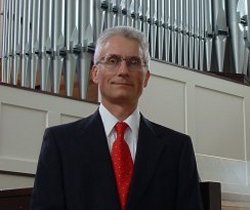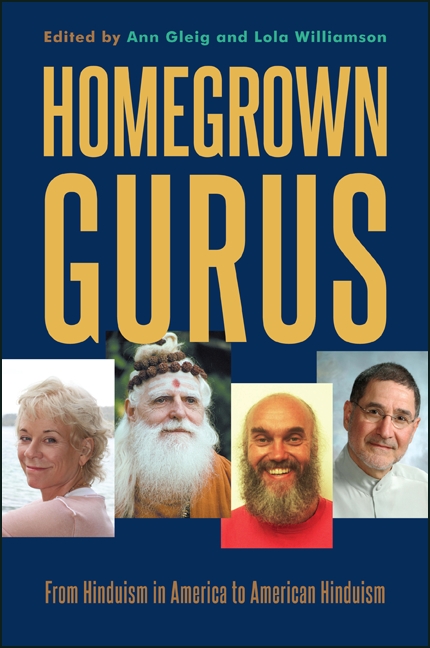
| | Organist | Accordionist | Composer | Conductor | Author | Educator |

 |
Henry Doktorski
|
 |
November, 2013: State University of New York (SUNY) Press has published a book titled Homegrown Gurus: From Hinduism in America to American Hinduism which includes a 22-page chapter about New Vrindaban co-written by E. Burke Rochford Jr. (Professor of Sociology and Religion at Middlebury College in Vermont) and Henry Doktorski (former resident of New Vrindaban and disciple of Kirtanananda Swami). Homegrown Gurus editors Ann Gleig and Lola Williamson wrote about chapter six in the Introduction : 
E. Burke Rochford Jr. and Henry Doktorski explore the limits of innovation and the precariousness of noninstitutionalized charismatic authority in chapter 6, Guru Authority; Religious Innovation, and the Decline of New Vrindaban : a study of the New Vrindaban community in West Virginia. New Vrindaban was led by American-born Kirtanananda Swami, one of the early disciples of A. C. Bhaktivedanta Swami Prabhupada, the founder of the International Society for Krishna Consciousness (ISKCON), more popularly known as the Hare Krishna movement.
Doktorski explained:Following Prabhupada's death in 1977, Kirtanananda became one of ISKCON s eleven successor gurus. After he was violently attacked and subsequently charged with criminal activities and moral transgressions, Kirtanananda s authority and leadership began to waver. Expelled from ISKCON, he initiated several controversial religious innovations at New Vrindaban, including the integration of practices from Christianity and other religious traditions that were intended to Americanize Krishna Consciousness. Such radical changes in the community s core teachings, however, contributed to New Vrindaban s dramatic decline as a religious community.
In our chapter titled Guru Authority, Religious Innovation, and the Decline of New Vrindaban, Professor Rochford and I describe the eight-year Interfaith Era of New Vrindaban between 1986 and 1994; its inauguration, its unfolding and the eventual and perhaps inevitable conclusion of Kirtanananda Swami Bhaktipada s controversial experiment: the de-Indianization or Christianization of Krishna Consciousness. We explain quite a bit of the history of Kirtanananda and New Vrindaban which preceded the Interfaith Era, including some of the specific instructions which Prabhupada gave about the development of the community.
The 234-page hardcover book can be purchased from SUNY Press and other book retailers such as Amazon.com. See Homegrown Gurus.We describe the assault on Kirtanananda which left him ten days in coma and three weeks in intensive care and the changes he began incorporating around this time in the temple worship, dress and chanting style. Many former and current New Vrindaban devotees, including Kirtanananda, were interviewed by the authors and are quoted in this chapter. The negative effect of Kirtanananda s innovations on the Indian community is also discussed. We describe some of Kirtanananda s legal problems and moral transgressions which, in tandem with his religious innovations, alienated many members of the community and either drove them away to reside at other ISKCON centers or, if they remained at New Vrindaban, provoked them to rise up and challenge Kirtanananda s leadership and return the community to the style of sadhana and Vaisnava culture as originally prescribed by Prabhupada.
I quote two sentences which appear towards the end of the chapter: In combination with his moral failings, interfaith signaled to Kirtanananda s followers that he had broken his connection with Prabhupada and the Gaudiya Vaisnava tradition in favor of establishing his own independent authority. Kirtanananda broke from the tradition s lineage (parampara) and thereby forfeited the religious authority he had inherited from Prabhupada and the previous teachers (acaryas). . . The failure of Kirtanananda s leadership left New Vrindaban struggling to survive and the community faced years of decline.
I think many Krishna devotees, even those who have never visited New Vrindaban (as well as scholars and students of religion), may find this study of Kirtanananda s changes and their result on devotee morale fascinating and perhaps illuminating reading.
|